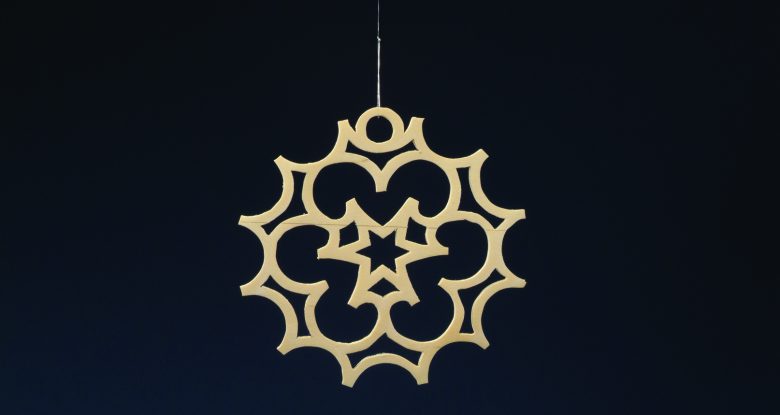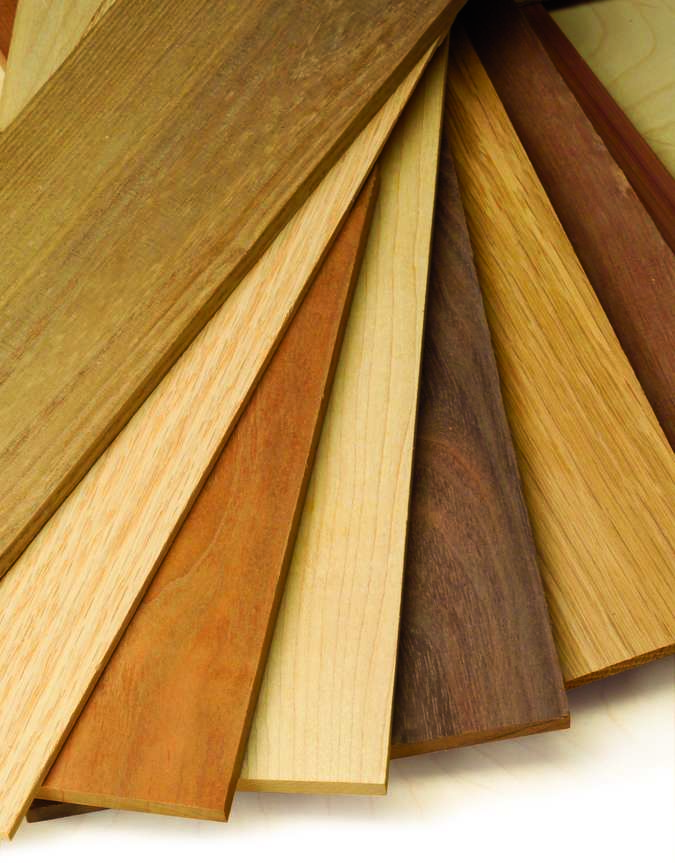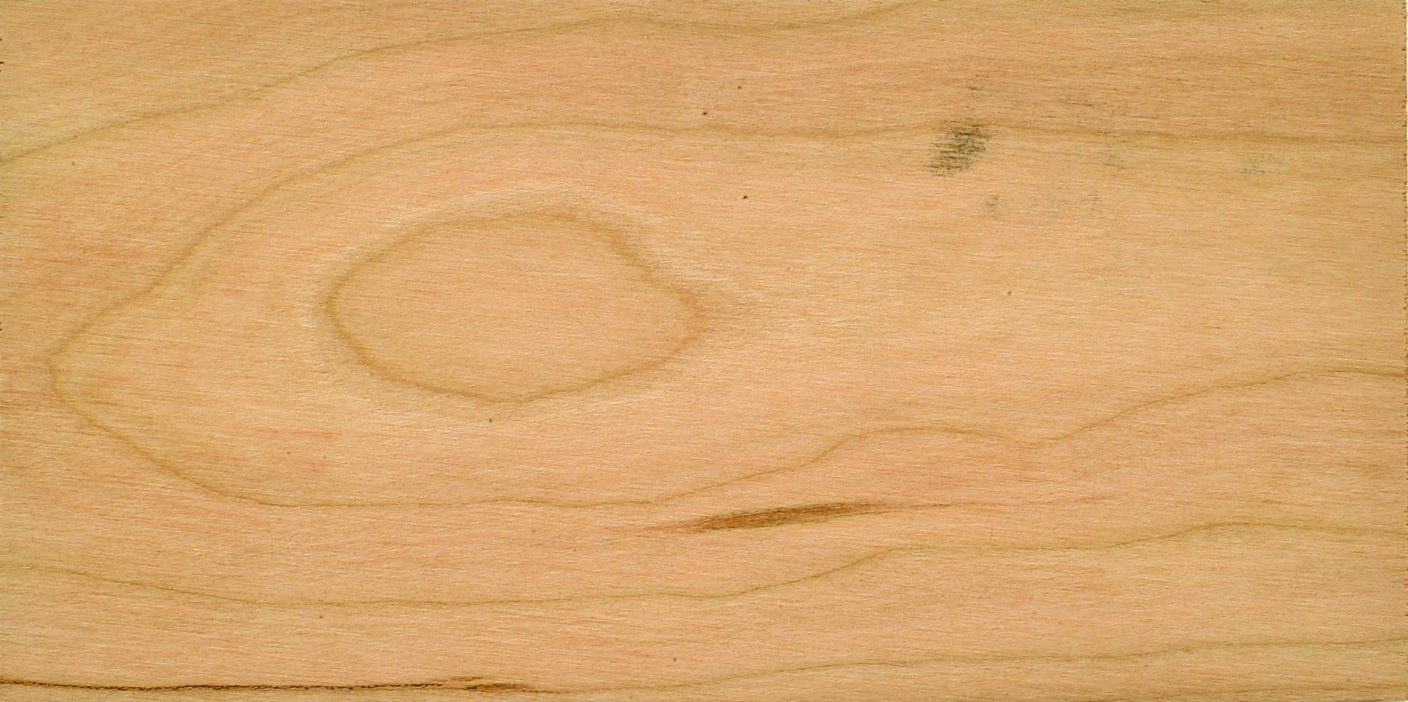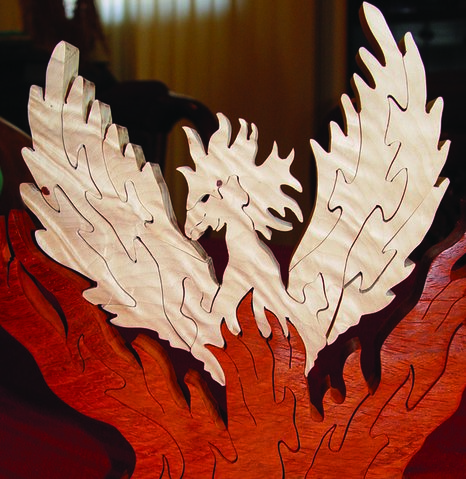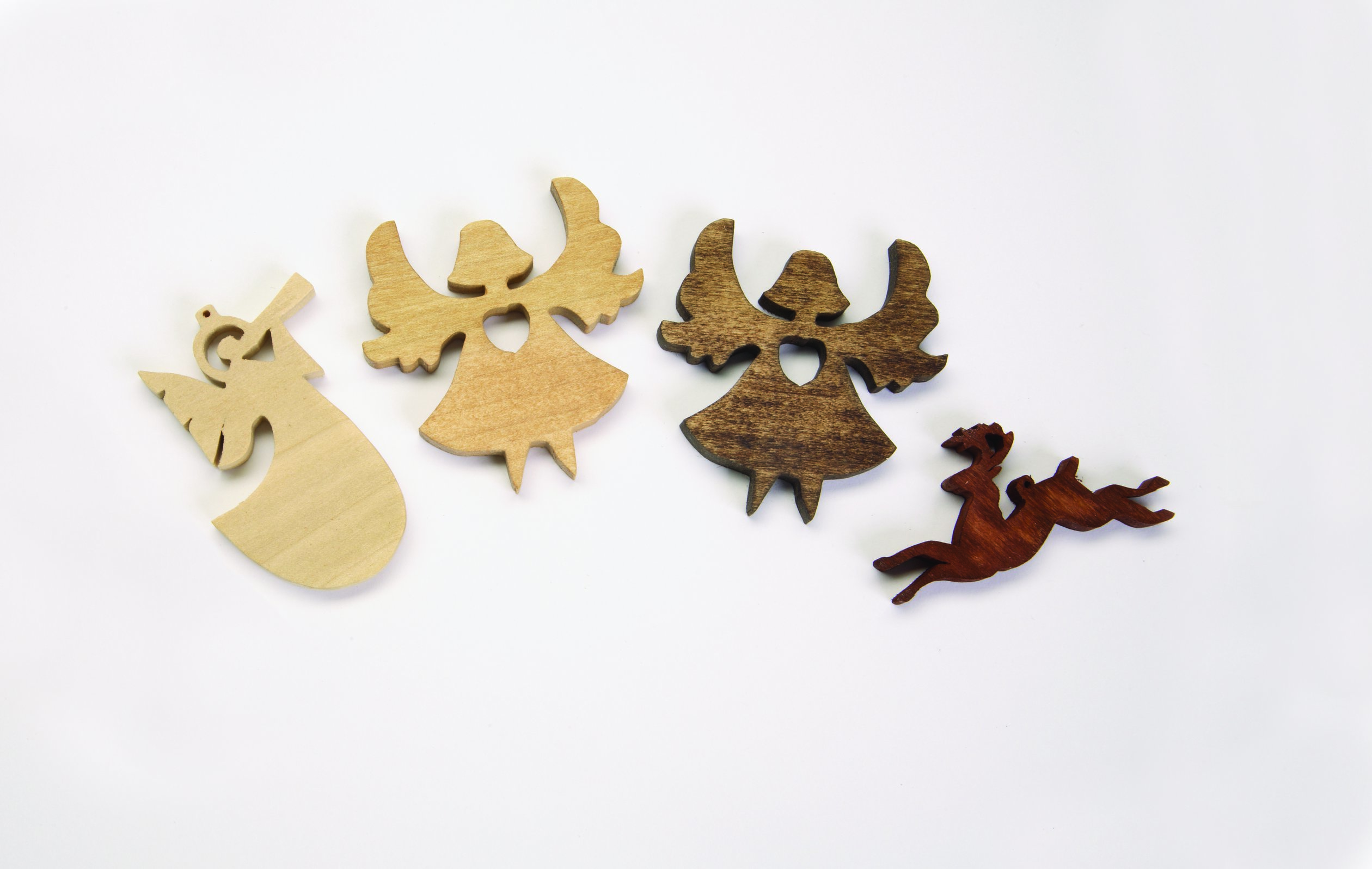A beautifully white colored wood that is ideal for ornaments and intarsia work
by Bob Duncan
This article was first published in issue 25 of Scroll Saw Woodworking & Crafts.
‘Tis the season when ornaments and holiday presents are popular. You also hear about holly—holly berries, holly leaves, but what about holly wood? Is it good to scroll?
Holly is a very white wood, but it can sometimes have a few blue streaks in it. The heartwood and sapwood are almost identical. Even though other woods yellow with age, holly tends to stay white. It is ideal for white parts in intarsia, or for other white details or projects—such as holiday ornaments.
Holly is not a wood that you can pick up at a home improvement store, but many hardwood dealers carry it. Prices range from $10 to $30 a board foot, which makes it a more expensive wood. Charlie Self, author of Woodworkers Pocket Reference, suggests looking for holly someone has cut down while clearing land; it’s a relatively common wood on the East coast. It is usually found as a shrub, but can grow large in the wild.
Machining
Holly’s hardness can be compared to soft maple or walnut. It cuts well on the scroll saw, but wears blades out more quickly than walnut or maple. Since it is a white wood, burn marks on the edges are obvious. Be sure to change your blade often while cutting; it’s easier to change a blade than it is to sand off a burn mark, especially in a delicate area.
When cutting holly, I noticed that it has a slightly wild grain. While the grain can be very hard to see, it does tend to loop back upon itself. If you are using the holly as a solid piece, for intarsia or inlay, for example, this is not a problem. But you need to be aware if you are cutting fretwork. I tried to cut the Peace Sign on page 44, but the holly broke apart when I was cutting my second fret. After examining the section under my magnifier, I saw that there was a small grain direction change in the wood between frets. It wasn’t visible to the naked eye, but under magnification, it was clearly visible. Pay particular attention to the orientation of the pattern on the work piece.
Holly sands to a polished finish. For the ornament above, I sanded up to 600-grit. Even before applying a finish, the wood shined.
Finishing
Holly takes most finishes well, but since you are paying a premium price for the whitest wood, I would suggest not staining it. Use caution when applying any finish to holly; you don’t want anything that will mar the pristine white wood.
Many clear finishes give the wood a slightly yellow tint after they dry. So whatever finish you use, try it first on a piece of scrap wood to make sure it gives you the color you want.
Lacquer, polyurethane, and wax stay on the surface of the wood, while oil finishes soak in.
Summary
Holly is an expensive wood to buy, but can be found growing wild in most of the Eastern United States. It cuts and machines well, but you need to watch that you don’t burn it. It glues well, but caution should be taken when applying a finish in order to preserve the color.
Discuss this material on the Scroll Saw Woodworking & Crafts forums.


